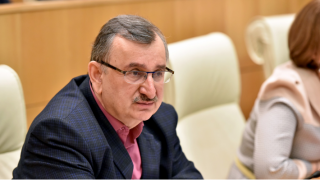Roman Gotsiridze: “It has been two years that we have a double-digit inflation. Last year, it was 15%, this year it was 10% and prices in a two-year period increased by 25-30% whilst prices on some staple goods, food and medication increased most sharply.”
Verdict: FactCheck concludes that Roman Gotsiridze’s statement is MOSTLY TRUE.
Resume:
The problem of inflation has indeed been very critical for Georgia’s population. There has been a double-digit (percentage) price growth annually for the last two years. The total inflation rate was 25% from August 2020 to August 2022. Price growth should have been 6% in two years if the target inflation rate had been kept.
The inflation rate in groups of goods where the population is particularly vulnerable was higher as compared to the general inflation figure. For instance, inflation in the food and non-alcoholic beverages group and the transport group reached 34.7% and 41.6%, respectively. However, the National Statistics Office of Georgia reported that the inflation rate in the medication and healthcare groups was much lower as compared to the general inflation figure which was partially precipitated by allowing parallel import from Turkey.
In 2022, annual inflation was fluctuating within the margin of 11%-13%, similar to the second half of 2021, which is higher as compared to the 10% named by Roman Gotsiridze. However, the highest inflation rate registered in 2021 (13.9%) is related to the effect of subsidies on utility bills which caused an “artificial reduction” of inflation in the same year. Therefore, “real” inflation was much lower at the end of 2021. Accordingly, Mr Gotsiridze’s figures are technically mismatched with the actual indicators. Roman Gotsiridze's statement contains inaccuracies in the final calculation and part of medicines, although the overall context regarding high inflation is true. Therefore, FactCheck concludes that Roman Gotsiridze’s statement is MOSTLY TRUE.
Analysis
United National Movement MP, Roman Gotsiridze, on air on Radio Palitra’s broadcast of Shuadghis Studia, stated: “It has been two years that we have a double-digit inflation. Last year, it was 15%, this year it was 10% and prices in a two-year period increased by 25-30% whilst prices on some staple goods, food and medication increased most sharply.”
The current inflation problem is critical for Georgia’s population. As of August 2022, annual inflation was 10.8% and it was 11.5% in July. However, the decrease in the annual inflation figure in August was precipitated by the sharp price growth in August 2021 instead of a price reduction in the same period of 2022. There was also double-digit inflation from July 2021 until the end of the year. Prices increased by 25% in two years as compared to August 2020.
Table 1: Annual Inflation Figures in 2019-2022

Source: National Statistics Office of Georgia
The highest annual inflation rates were registered in December 2021 and January 2022. However, the higher inflation rates in this period are partly related to the subsidies disbursed in December-February 2020-2021. As a part of the subsidies, the government paid the utility bills for a certain part of the population which technically resulted in decreased utility bill payments and, therefore, “artificially” decreased the inflation rate. Therefore, utility prices in December 2021 were compared to the zeroed out utility prices of 2020 which resulted in a higher annual inflation rate. Roman Gotsiridze was speaking about artificially reducing the inflation rate at the end of 2020 as a result of subsidies. However, according to the same logic, the inflation rate turns out to be “artificially increased” by the end of 2021. Excluding this effect, the highest inflation rate was registered at 12.8% in October 2021 which was quite a high figure. However, given the aforementioned effect, it is an exaggerated assessment to say there was 15% inflation last year.
In line with Roman Gotsiridze’s statement, inflation in the transport and food groups has been much higher in the last period as compared to the general inflation rate which poses a critical problem for the population. For instance, inflation in the food group fluctuated within 21%-22% from April-June 2022. Naturally, the population is the most vulnerable vis-à-vis this particular group. Inflation in the food and non-alcoholic beverages and transport groups reached 34.7% and 41.6%, respectively, in the last two years.
Roman Gotsiridze also spoke about medications becoming more expensive. According to the report of the National Statistics Office of Georgia, inflation in the healthcare group reached 12% in the last two years which is significantly lower as compared to the general inflation rate. In the medications group, which is a part of the consumer price index, there was 22% inflation on vasodilators, 13.8% on painkillers and 13% on digestives. These inflation figures are significant, although they are much less than the general inflation rate. Prices in the antibiotics and vitamins group basically remain the same. Allowing parallel import from Turkey in 2022 resulted in the lowering of prices on certain medications.








